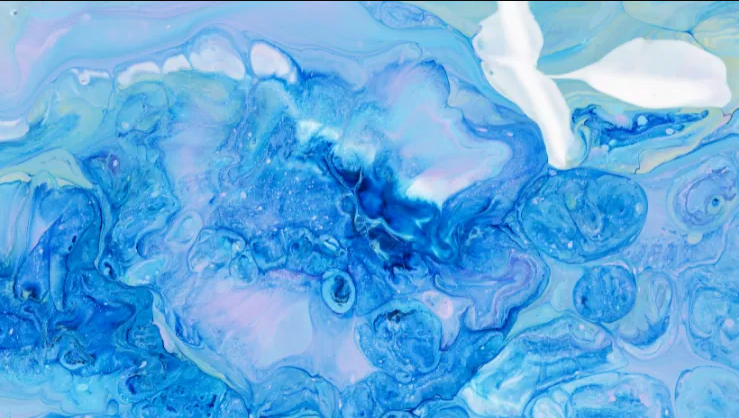


All voices matter


Did you know that scientists have estimated that our incredible human eyes have the ability to distinguish up to a whopping 10 million colors?
Amidst familiar blue, green, and red, it’s easy to overlook the existence of rare colors. These elusive and enchanting colors are like hidden gems.
They give us a peek into nature’s artistic brilliance, taking us beyond the ordinary colors we’re used to.
Let’s see what the 5 best rare colors on the planet are:
Meet Kermes red, the ancient crimson dye with a fascinating history that traces back to the early Egyptians.
What makes it truly unique is its origin—derived from the ground-up bodies of female kermes insects, which thrive on the kermes oak tree. This prized pigment held such immense value that it even served as currency for rent payments during the Middle Ages.
The rarity of Kermes red stems from the laborious process required to obtain a vibrant hue. It took an astonishing number of insects—hundreds upon hundreds—to produce a strong and vivid color.
However, as time passed, synthetic dyes emerged, replacing Kermes red in various applications, including the vibrant red paint seen on trees.
While Kermes red may have lost its prominence to modern synthetic alternatives, it remains an emblem of the ancient artistry and ingenuity that captivated civilizations throughout history.
Its rich legacy reminds us of the remarkable lengths humans once went to create and preserve the beauty of rare colors.

Enter the intriguing world of Indian yellow, a soft yet striking hue renowned for its extraordinary and peculiar origins. This rare color captivated the likes of legendary artists such as Van Gogh, but its story is nothing short of astonishing.
Believe it or not, Indian yellow was derived from the urine of undernourished cows in the city of Munger, located in Bengal. These cows subsisted solely on mango leaves, resulting in a brilliant yellow pigment that quickly became a coveted choice among artists.
The production of Indian yellow, however, was accompanied by a dark chapter in its history. In 1883, the Royal Society for the Encouragement of Arts conducted an investigation that unveiled the distressing treatment endured by these cows. Witness accounts highlighted the cruelty involved.
It took another 25 years for the practice to be completely banned. Today, remnants of Indian yellow can still be admired in one of the world’s most renowned museums—the Museum of Modern Art in New York City.
Notably, the bright yellow stars adorning Van Gogh’s iconic masterpiece, “Starry Night,” were painted using this very pigment.

Scheele’s green, a hue that played a pivotal role in the Victorian era’s infatuation with indoor plants. While Millennials may be credited with today’s houseplant craze, it was the Victorians who set the trend, with a particular fondness for this verdant shade.
Reminiscent of springtime meadows and flourishing gardens, Scheele’s green held an undeniable allure. However, there was a deadly secret lurking within its vibrant depths—arsenic.
This rare color came with a dark side, tragically poisoning those involved in the production of artificial flowers. Often young women, they would dye cloth green to create leaves for adorning the hats and coats of the wealthy.
Green was the epitome of fashion at the time, and arsenic was an essential ingredient for achieving the desired shade. It permeated not only wallpapers and garments but even found its way into food and beverages.
Thankfully, contemporary green colors are now created without the use of arsenic, opting for safer alternatives such as chlorine.
While these alternatives may be gentler on our bodies, they present a new challenge for the planet as they cannot be easily recycled or composted.

Vantablack is the ultimate black for goths and Halloween enthusiasts alike. This mind-boggling shade holds the title of being the blackest black in the world and was ingeniously created by Surrey NanoSystems, an English company. Vantablack itself is an acronym that stands for “Vertically Aligned Nano Tube Arrays” (VANTA).
Vantablack is a synthetic material crafted from carbon nanotubes that are meticulously aligned in a vertical fashion.
The density of these nanotubes is so remarkable that an astonishing 99.965% of visible light gets absorbed, leaving us with a void of darkness unlike anything we’ve ever seen before. It’s like staring into an abyss!

Lead white is one of the most significant colors in the realm of art, and holds a fascinating place in history.
While it was highly valued and extensively used by ancient civilizations like the Egyptians, Greeks, and Romans, it has become one of the rarest colors in modern times.
But why have we moved away from its use? Well, we possess knowledge that our predecessors did not.
You see, lead white, composed of ground-up lead carbonate, boasts a stunning brilliance and serves as a perfect additive to extend the lifespan of oil paints.

Join Our Knowledge Hub: Sign Up for Diverse Insights Today!